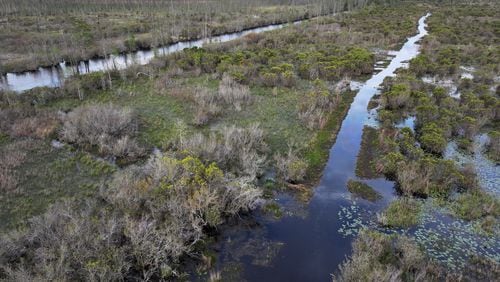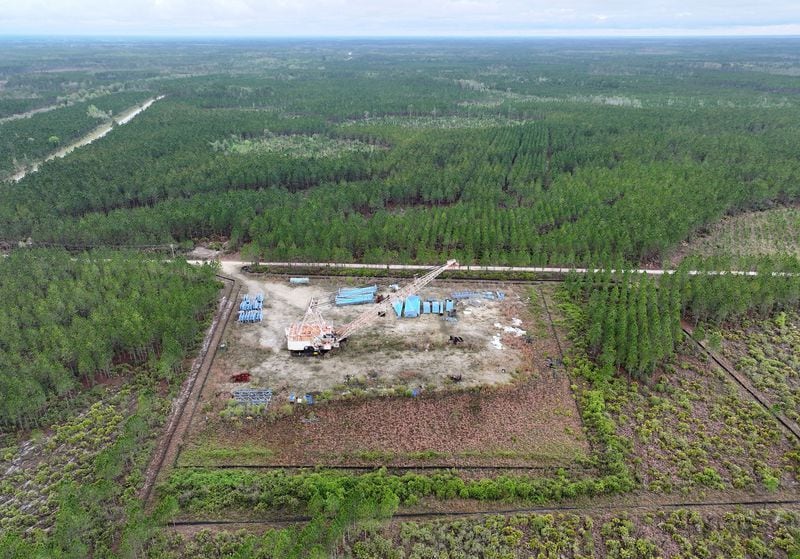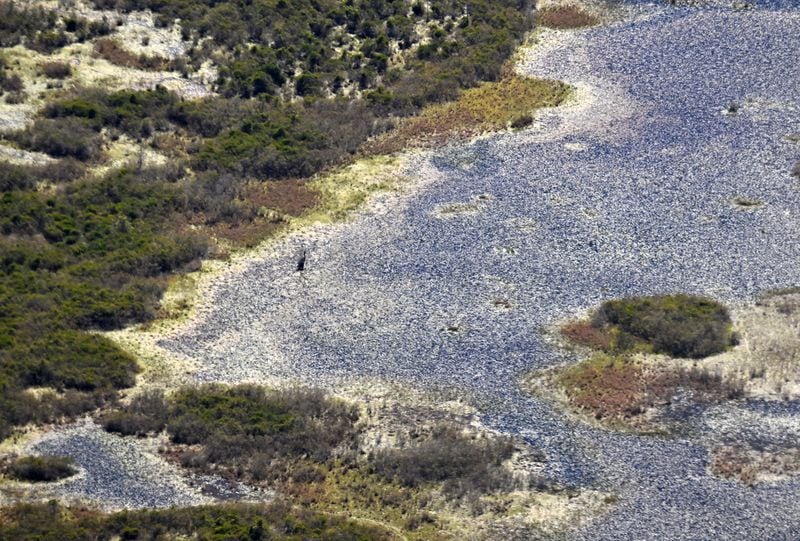Another session of the Georgia General Assembly ended after midnight Friday without any new protections for the Okefenokee Swamp passing, as a controversial strip mine planned near the refuge moves closer to becoming reality.
A bill that would have paused permitting of new mines like the one Alabama-based Twin Pines Minerals wants to develop on the swamp’s doorstep cleared the Georgia House earlier this week. But the measure — SB 132 — was not brought to the Senate floor for a vote on the session’s final day.
The fight over the proposed mine has become a national flashpoint uniting community leaders, visitors and others who want more protections for the swamp, which is on a short-list for recognition as a World Heritage site.
Some lawmakers and conservationists had portrayed SB 132 as the last, best hope to buy time for long-term solutions to protect the Okefenokee, the largest blackwater swamp in North America. But most major environmental groups were opposed to the legislation, calling it a watered-down half-measure that would have left the swamp in peril.
The legislation would not have prevented the Georgia Environmental Protection Division (EPD) from issuing permits to Alabama-based Twin Pines Minerals for the 582-acre mine the company wants to develop on Trail Ridge, the line of ancient dunes on the east side of the swamp. The titanium-rich minerals Twin Pines is after are most commonly used to make whitening compounds for paint and toothpaste.
Credit: TNS
Credit: TNS
But SB 132 could have temporarily impeded Twin Pines’ expansion plans. The legislation would have prevented EPD from considering new permits for “dragline” mining until mid-2027. Dragline mining is the same technique Twin Pines plans to use.
Ultimately, backlash from several key Republican Senate leaders kept the bill from making it to the Senate floor.
Earlier Thursday, Senate Majority Leader Steve Gooch told the Politically Georgia podcast he was worried the legislation could hamstring EPD, which is weighing permits for the mine.
“Those are decisions that shouldn’t be made by political entities. Those are decisions that should be made by regulatory agencies,” said Gooch, one of the top Republicans in the chamber.
Close allies of Lt. Gov. Burt Jones, who dictates which measures receive a vote in the Senate, also pushed for the bill to fail.
Throughout the day, speculation swirled over whether the Senate would vote on the mining measure despite the skepticism from party leaders. Jones kept tight-lipped about his stance, though he was said to be open to the measure.
By evening, Gooch and several other key Republicans said they were still opposed to the short-term moratorium but wouldn’t seek to block it from reaching a vote. Advocates worked the halls of the Gold Dome pressing for action, and legislators traded gossip about whether it would reach a vote.
It was unclear until after 12:30 a.m. Friday, when Jones said his chamber would consider a final, unrelated measure before banging a final gavel.
Neither Jones nor House Speaker Jon Burns commented specifically about the Okefenokee on Friday afternoon.
Last month, EPD released draft permits for the controversial project, which has faced intense pushback for nearly five years. The public has until April 9 to weigh in on the drafts. After that, EPD could issue final permits at any time.
Credit: HYOSUB SHIN / AJC
Credit: HYOSUB SHIN / AJC
Twin Pines contends its mine will not harm the Okefenokee, and EPD’s experts have mostly agreed with their assessment. But environmental groups claim the project risks irreparable harm to the swamp and its wildlife. Outside scientists — including some with the federal government — have also questioned the conclusions of the company and EPD.
Just this week, Rhett Jackson, a hydrologist at UGA who has analyzed Twin Pines’ plans, submitted new comments to EPD reasserting his view that the company’s planned groundwater withdrawals will increase the frequency of drought in the swamp and reduce flows on the St. Marys River.
Twin Pines has also touted its project as an jobs boon to rural southeast Georgia. The company says its project will create 400 positions with salaries of around $60,000.
But during a visit to the swamp earlier this month, Michael Lusk, who manages the Okefenokee National Wildlife Refuge for the U.S. Fish and Wildlife Service, said the potential environmental costs outweigh the economic benefits.
“The Okefenokee is this huge, naturally functioning ecosystem,” Lusk said. “Why take the risk of messing it up?”
Opponents of the mine have pushed a separate measure at the General Assembly the last few sessions, which would put all of Trail Ridge off limits to future mining. Proponents say the bill — House Bill 71 — has bipartisan support from more than half of the House and would protect the swamp, but it has never received a vote in committee, let alone from the full chamber.
With the session now over, any measure addressing mining near the Okefenokee will have to start over in 2025.
Rena Ann Peck, the executive director of the Georgia River Network, said early Friday she felt legislators abandoned the swamp by not taking action.
“Seeing that the majority of Georgians oppose mining adjacent to the swamp and watching as EPD was bombarded this month with public comments opposing the mine, Georgia legislators knew it was time to do something,” Peck said. “But they (the General Assembly) did nothing.”











